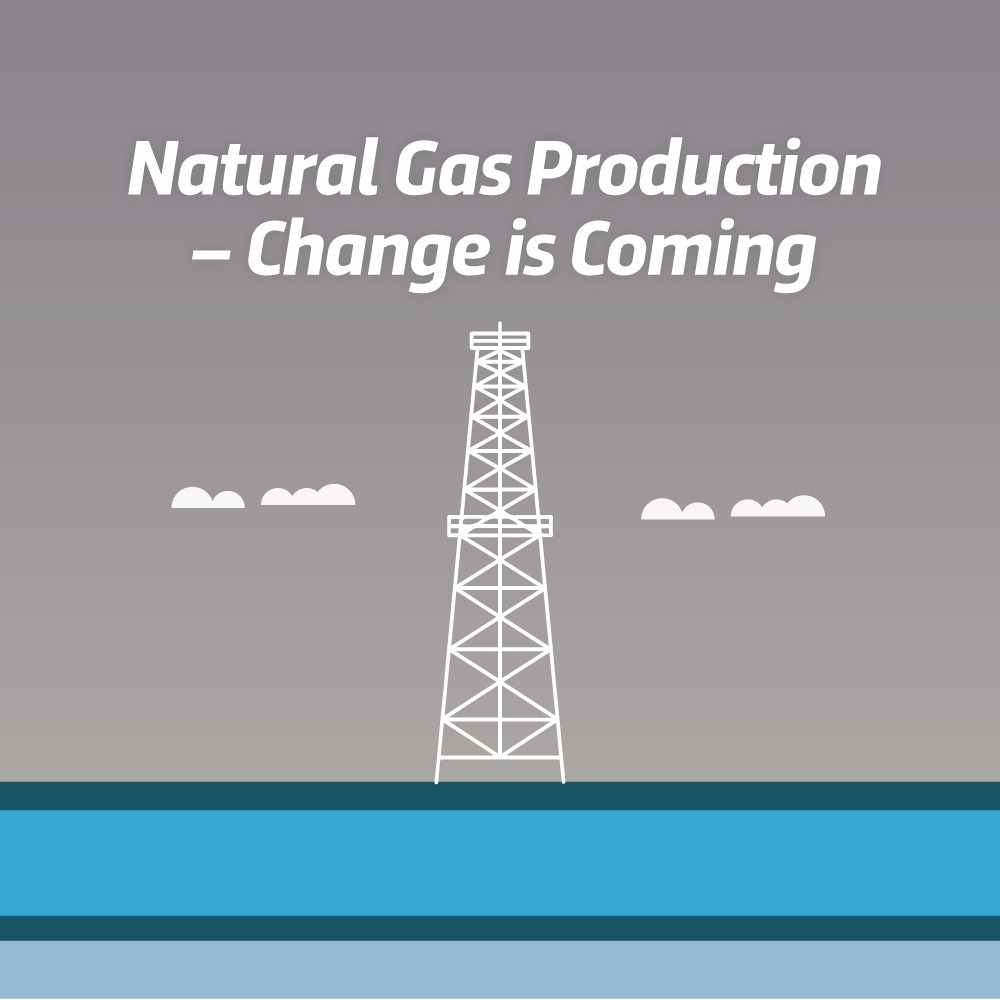Changes are coming to natural gas production

Royalties are about collecting the value of our resources when they are produced and sold. How much value there is to collect depends on the prices we can receive for our resources and how much it costs to produce and sell them.
To understand the cost side of that equation, we need to be familiar with the processes typically used to get our resources out of the ground and ready for sale.
In the case of natural gas, the production process starts at the well. A well is drilled into a formation, where the natural gas is trapped in spaces within rock. The well creates a pressure difference, and the gas moves out of the rock (where it is under high pressure) into the well bore (where the pressure is lower).
The well brings the gas stream up to the surface, often along with other substances. These substances can be sulphur, or natural gas liquids (NGLs) such as ethane, propane, butanes, and pentanes and other heavier components (called “pentanes plus”).

At the surface, certain components in the gas stream may condense to become liquid in the pipe at the wellhead. These liquids (called “condensate”) will typically be removed. If so, this ‘field condensate’ can be sold separately, often to heavy oil and bitumen producers who use it as a diluent for their products.
The raw gas stream (now without condensate) will then be sent to a gas plant for processing. Typically, the plant will receive gas streams from many wells located across the same gas field, or from a number of fields. At the gas plant, any NGLs and acid gases (such as carbon dioxide and hydrogen sulfide) are extracted from the combined gas stream.
The processed gas, now largely methane, is considered “marketable natural gas”. It is then sent onward by pipeline, for storage or sale.
The NGLs and hydrogen sulfide (converted into sulphur) that are removed are usually sold separately to petrochemical companies. Those companies will use the NGLs and sulphur to make value-added products such as polyethylene, fertilizer, and other chemicals. Sulphur is often shipped overseas, where it is sometimes mixed with guano (accumulated bird droppings that can be mined as a source of phosphorous) to make fertilizer.

While the overall natural gas production process has largely remained the same, there have been significant advances in well drilling during the past decade.
A major change has been the increasing use of horizontal drilling, rather than traditional vertical drilling. In horizontal drilling, a well is drilled down to the desired depth, but then turns and continues horizontally through the targeted formation. This creates a broader low-pressure area that the gas can flow into. Generally speaking, this results in more gas being produced by the well (compared to a vertical well).
When the rock in a target formation has low porosity or low permeability, horizontal drilling is often combined with multi-stage hydraulic fracturing. This pries open the tight rocks, helping coax the gas out. Together, the two technologies can result in very high rates of gas recovery.

Out of all conventional gas wells in Alberta, horizontal wells represent a very small fraction. In 2014, there were only 4,909 horizontal wells producing conventional gas in Alberta, while there were 104,046 vertical wells. However, the number of horizontal wells used for conventional gas has steadily increased each year. In fact, 64% of natural gas wells placed on production in 2014 were horizontal wells.
When it comes to natural gas produced from shale and other tight formations, horizontal wells have quickly become the preferred option. Although there has been very limited production of shale gas in Alberta, the vast majority of shale gas wells (92%) are now horizontal wells. Only two years earlier (in 2012), vertical wells still outnumbered horizontal wells.

What does this mean for royalties?
Well, based on current trends, we can expect that more horizontal wells will be used for gas production in the future — especially as Alberta’s shale gas and other tight formation gas resources are further explored and developed.
Horizontal wells are very different from vertical wells. They are larger in size, more technically complex, and cost much more to deploy. They can also recover larger amounts of natural gas in a shorter time frame. This affects the amounts of revenue that can be generated and how fast the costs of the well can be recovered.
This affects the amounts of revenue that can be generated and how fast the costs of the well can be recovered and, ultimately, the royalties Albertans receive.
Source: Alberta Energy; Alberta Energy Regulator